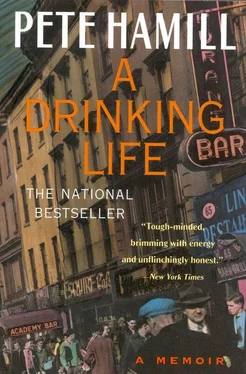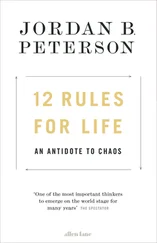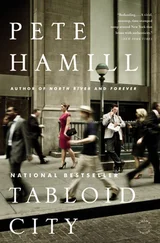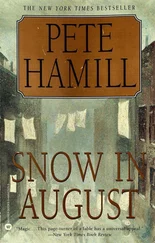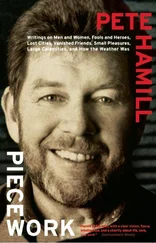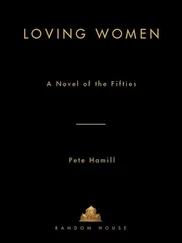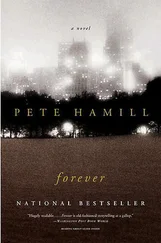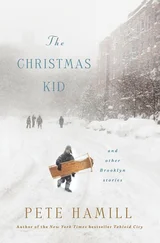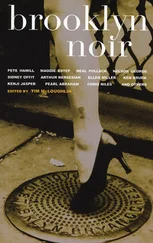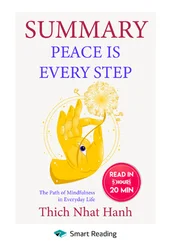Hogarth said, Okay, now look at her and remember what you see, then close your eyes and draw what you remember.
I tried what he asked and drew the memory of the woman bending one knee and extending the other. When I opened my eyes, I was amazed. There was a big brutal form on my page, bold and strong. Then Hogarth said, All right, the quick poses are over, let’s do a twenty-minute pose.
The model sat on the stool and posed with one foot on the second rung, the other stretched out behind her on the floor. There was no expression on her face.
I started drawing but I cramped up again, starting at the top in a linear contoured way. When I stopped to look at it, everything was out of proportion. Her neck was too short, her shoulders too broad, her stomach too thick. Worse, she didn’t seem to be sitting on the stool; she looked pasted to it. Then Hogarth was beside me again.
You didn’t think this out, he said. The big forms have to come first. Look.
He took my chalk and made a few bold strokes over my labored drawing, showing me that the way I was going, the model’s feet would be off the page. He made them fit. And he showed me where the big forms were.
You lay it out in big quick forms, he said. Even if the forms are light, make them the basis. Later you can get into the details. Just don’t start with the details or you’ll get lost in them. It’s the old business about not seeing the forest for the trees. Or the trees for the leaves.
He was talking to me and talking to the full class. But he didn’t seem to be trying to make me feel small; there was no Brother Jan in him. He said his few words, in a sharp precise voice, and then moved on to another student. Everybody listened; we all learned.
When the twenty-minute pose ended, Hogarth called a break. The model slipped on her robe and slippers and took out a pack of Chester fields. She glanced at some of the drawings but not mine. I watched her go. She must have felt my eyes on her, because at the door she smiled in a polite way and walked into the hall. I wandered out to the hall too. I didn’t smoke then, but everybody else did. They were all talking and laughing and smoking. I wandered around the hall, looking at notices for art shows and foreign movies, glancing into classrooms where other students worked on oil paintings. I didn’t see the model anywhere.
The break ended, and now Hogarth was in front of his own newsprint pad, giving us an anatomy lesson. He explained the basic shape of the torso, how it was essentially several wedges, one large, one small; or, in a shorthand, more fluid way, a kind of peanut shape. He showed us how, if we established the peanut, there was a logic to the way you added shoulders, arms, and legs.
The head is the basic measure, Hogarth said. The ideal figure is seven heads high, although fashion illustrators — or our friend El Greco — make it nine heads high. Forget about them for now. Forget about short people or infants too. For our classes, seven heads should be the measure. And remember, your task isn’t to copy what’s in front of you. Any camera can do that. It’s to understand what the figure is doing and why it can do it. You learn anatomy to understand what’s beneath the skin. And you don’t express the figure by what it is, but by what it does. It is what it does.
I was awed by the man because it wasn’t just talk; he also put on a show, starting with the peanut, the shoulders roughed in as a kind of barbell, the hands beginning as mittens, then acquiring startling power. It is what it does, he said, making his own drawings look both easy and impossible, the chalk obeying his commands, providing shape, volume, and power to the figures. He luxuriated in foreshortening, in making the figure seem to leap off his pages. Sometimes he made forms simpler; at other times, he made them more complex, showing unseen muscles, bones, structures, beneath the sheath of skin. Those figures didn’t look like our models; a Hogarth drawing resembled nothing on the earth. But he seemed to be saying that it didn’t matter. The model was where you began, nothing more; the drawing was the result. The model was a collection of facts; the drawing was the truth.
When that first evening was over, my mind was a roar of words, bodies, drawings. I remember Hogarth saying to the model, Goodnight, Laura, and thank you. She pulled on the smock and fumbled for her cigarettes and left. I went home in a blur of exhaustion and excitement, thinking: My life has changed. Here. Tonight. This morning I was just another fuckup, a high school dropout from Brooklyn. Tonight I became an art student.
And hey, maybe I was going to be good at it. On the breaks I walked among the other easels. Some drawings were beautiful. Some were pretty good. Some were dreadful. Mine were at least okay. I was the youngest student in the class, but I was better than a lot of them. I thought: I can do this.
Back in the room beside the Parkview, I looked at the drawings I’d made, tearing up the truly dreadful ones, seeing a progression, an improvement. Lying in bed later in the dark, hearing the trolley move down Prospect Park Southwest for Coney Island, I thought about the model. What did Hogarth call her? Laura. Like the Stan Kenton record. Laura, on the train that is passing through . . I wondered if she had a husband or boyfriend or children and what they would think of her sitting naked every night in a roomful of strangers. I wondered what she thought as she held herself still for this group inspection and the only sound was chalk on paper. I wished she would come here to this place in Brooklyn and let me draw her. Slowly and lovingly. Until I got it right. I was tracing the outlines of her body in my mind, her small hard breasts and thickening hips, when I fell asleep.
So I worked in the Navy Yard days and went to C&I nights. On the weekends, there was drinking, openly in the Parkview or clandestinely in my own room, joined by some of my friends from the Totes. There was one difference. In the fall, I had drunk out of a sour sense of waste and failure. Now I was drinking exuberantly, certain I had earned that right. I felt that I was on my way.
Hogarth was a great teacher. He had a critical intelligence that could be sardonic but not devastating; I never saw him destroy anybody’s ego or try to establish his own worth by humiliating a kid. At the same time, he set up high standards of excellence and let us know when we weren’t pushing ourselves hard enough. Most of us failed, most of the time. But he encouraged us to try again, and although most of the students wanted to be cartoonists, he always reminded us that there were other options.
You might become a painter, he said. You might become a sculptor. You might make murals. Just work at the top of your talent and keep pushing past it. And remember: The figure is the key to everything.
I bought a small composition book and started writing down some of what he said, his phrases, the names of the artists he mentioned. During the week, there was no time to go to museums or galleries; on weekends, the rhythm of the Neighborhood seemed to eat my time — taking my clothes to the laundry, cleaning the apartment, visiting 378, drinking on the Totes or in the Parkview. But I did find time to go to the main library at Grand Army Plaza. In the reference room, where they kept the art books, I looked at pictures by Michelangelo and Rubens, Rembrandt and Caravaggio, Leonardo and Velázquez, Picasso and Matisse. I realized I’d seen many of the paintings and drawings before, in magazines, or in religion books in grammar school, even in advertising; but now they were works made by men, calculated, planned, made by hand, in the same way that Steve Canyon was made by Milton Caniff.
Читать дальше
